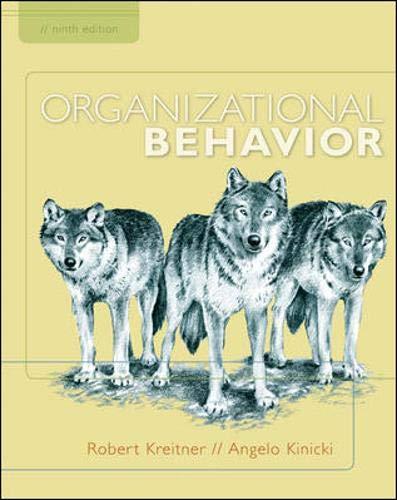Throughout the 1990s, Selina Lo had a reputation as one of Silicon Valleys most aggressive and successful
Question:
Throughout the 1990s, Selina Lo had a reputation as one of Silicon Valley’s most aggressive and successful salespeople. But anyone who was not part of what Lo deemed the solution, she treated as her personal problem.
Her bag of management tools included yelling, fist pounding, and stomach-curdling sarcasm.
David Callisch, director of marketing at switchmaker Alteon WebSystems in the late ’90s, was among those she shot down, rolled over, and put in their place. After two years of working for Lo, who was vice president of marketing at the time, Callisch begged her to please, please let him report to someone else. “I said, ‘I can’t handle working for you,’ ” he recalls. “ ‘You cause me huge amounts of anxiety. I don’t want to go on like this.’”
“She’d stick her head in your office and bark out a bunch of commands,” Callisch says. “We used to call them ‘drive-bys.’ If we ever wanted to motivate someone, we’d say, ‘We’re going to tell Selina that you can’t do this.’ It would put the fear of God into them.”
The Big-Cheese Challenge In 2004, Lo became CEO of Ruckus Wireless, a Wi-Fi start-up in Sunnyvale, California. And that was when she realized she needed to change. The first inkling came as she was trying to recruit executives she had known in other jobs. She made them financial offers they couldn’t refuse. They refused anyway. They also told her why. “I had heard complaints before,” says Lo. “But I always shrugged that off. Hey, stress is part of this profession;
it’s part of the package. I didn’t realize I was making people physically sick.”
Lo had also grown accustomed to ripping into her bosses, who generally tolerated it because her fierceness served their companies. But shortly after taking over at Ruckus, she got into a heated argument with a major investor, and even Lo realized she had crossed a line.
Dominic Orr, chairman of the board at Ruckus and Lo’s boss at Alteon, was present at that investor meeting and calls it a moment of truth. “It became clear that Selina Lo might win—but Ruckus might lose,” he says.
The final straw came as Lo found herself for the first time managing people she had recruited and hired. She felt an unfamiliar obligation for the lives and happiness of employees—all employees, not just the engineers and marketers she usually favored. “When I was VP of marketing, I could go nuts, and the damage would be limited,” she says. “When the CEO screams, the impact is much greater.
I can’t build a company with nervous people.”
The Softening What Lo calls her “directness” is bred in her bones, the result of being raised by hypercompetitive parents in fast-paced Hong Kong. It also stems from being a woman in a male-dominated industry, she says.
Changing required a huge effort of will. And she was no stranger to management training. “I tried to do what the books said: be hands-off and let people make their own mistakes,” says Lo. “But I hated it, hated it, hated it.”
Disenchanted with the classes-and-books route to better leadership, Lo resolved to reform her own way.
Impatience, she recognized, was her greatest foe. Lo likes things settled, which means arguments end when she leaves the room. Winner: Selina Lo. At Ruckus, she adopted a group decision-making process that forces her to consider the opinions of others. Now, when a disagreement arises, she quickly convenes a meeting of herself, her disputant, and one or two other people affected by the decision. “If they agree with me, he gets more data points about why I am correct,” says Lo. “If they agree with him, I ask myself, Am I being blind or unfair?”
She also gets a group assist in matters of emotional intelligence. In the past, Lo had always been stingy with praise, because she herself doesn’t need it. “In Chinese culture, it’s considered bad manners to praise your kid, so I never got that from my parents,” she says. “I became very self-driven.” At Ruckus, Lo has asked colleagues to help her recognize when and how to dole out the kudos. Before an all-hands meeting, for example, someone might suggest she acknowledge an individual for a job well done. “The process has been like learning to be a parent,” she says. “People learn to be good parents without going to school. If you care, over time, you figure out how to do it.”
Questions for Discussion
1. How did Selina Lo’s interpersonal style evolve in terms of the conflict metaphors discussed in this chapter?
2. What evidence of functional and dysfunctional conflict is apparent in this case?
3. What did Selina Lo need to learn early on about emotional intelligence, as discussed in Chapter 5? How would it have impacted her management style?
4. How would you handle a boss with the win–lose style Selina Lo exhibited early in her career? Explain.
5. Using Table 13–2 as a guide, what lessons about cross-cultural conflict did Selina Lo need to learn early in her career?
Table 13-2

6. Which conflict-handing styles are evident in this case? What was their comparative effectiveness?
Step by Step Answer:






